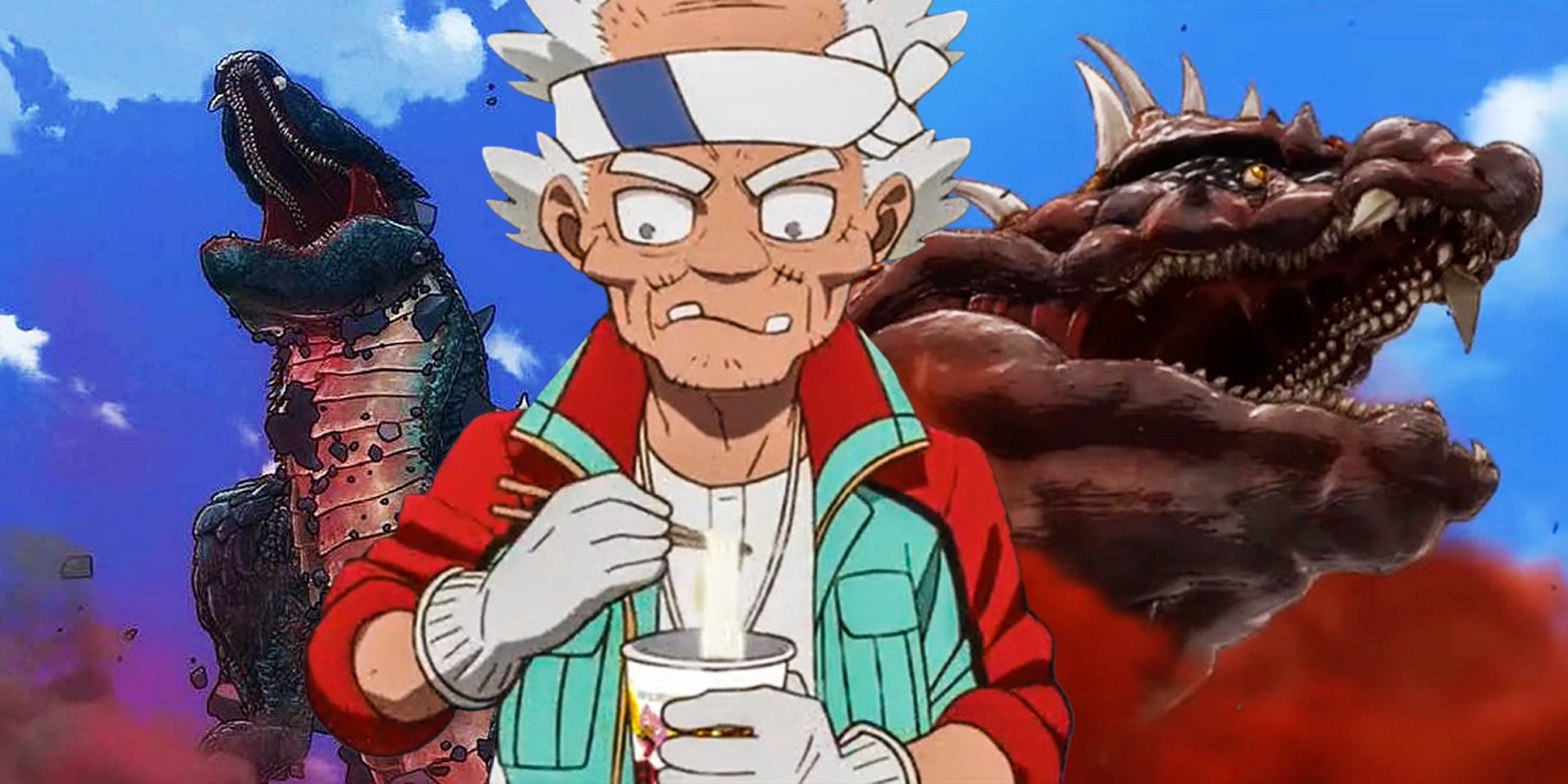
The King of the Monsters has four different forms in Godzilla Singular Point. Though the final episodes of the series feature a recognizable version of the Japanese pop culture icon, he doesn’t start out this way. In fact, his appearance in his first episode is a far cry from the Godzilla that fans know and love.
Netflix’s Godzilla anime takes a number of cues from Shin Godzilla in its approach to the titular villain. In what was the first installment in the franchise since 2004’s Godzilla: Final Wars, Shin Godzilla’s monster displayed a power that no other incarnation of the monster has ever used before. The kaiju demonstrated the ability to transform from one form to another, with each state being a superior evolution to the previous one. The grotesque, armless beast that crawled across the ground at the beginning of the movie later gained a full set of back spikes, arms, and a pair of fully-developed legs that made it possible for him to walk on two feet.
Godzilla Singular Point went in the same direction with its take on the kaiju by giving him multiple evolutionary stages. When the show’s “singular points” first unleashed Godzilla on the world, the military failed to find an answer to his power, despite the fact that he was levels below traditional interpretations of Godzilla. But as the battle continued, Godzilla adapted and changed, thus making his defeat feel like an impossible scenario. Over the course of the series, Singular Point introduced four unique forms for the monster.
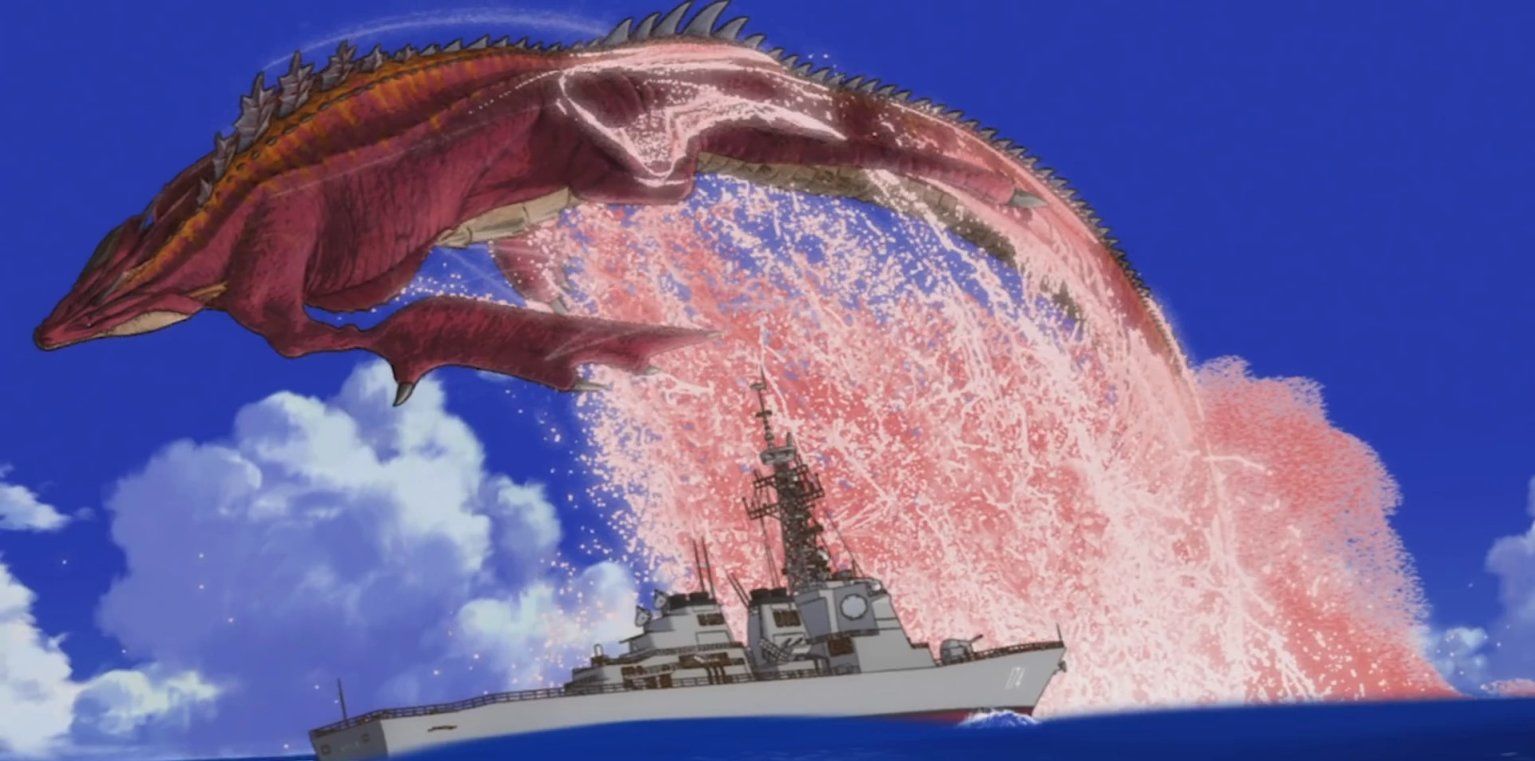
One interesting difference between Singular Point’s transformations and Shin Godzilla’s is that the former seems to have unexpectedly based some of its Godzilla designs on existing Toho monsters. That’s certainly the case with Godzilla’s first form in the anime, which has been dubbed Godzilla Aqualitis. First glimpsed in episode 3 before being fully revealed in episode 4, the creature was shown to be a giant fish with an incredibly long tail and small spikes down its neck. Because of its fish-like appearance and maroon-colored scales, fans didn’t know this monster was supposed to be Godzilla when he was first teased in the marketing. Instead, it was thought by many that the anime was including Titanosaurus. Titanosaurus was an aquatic, two-legged fish monster who lived near the bottom of the ocean in 1975’s Terror of Mechagodzilla. Though he was said to be a peaceful kaiju, the movie’s mind control plot made him into a villain and an ally of Mechagodzilla.
Obviously, Titanosaurus isn’t in Godzilla Singular Point, but the resemblance between him and Godzilla’s first form is too great to be a coincidence. It appears that what the anime did was take Titanosaurus’ original look and make it more fish-like by taking away its legs. The Titanosaurus redesign was then used as Godzilla’s original form. Using the Showa series kaiju in this way amounted to an odd move that may prevent the actual Titanosaurus from appearing in future storylines.
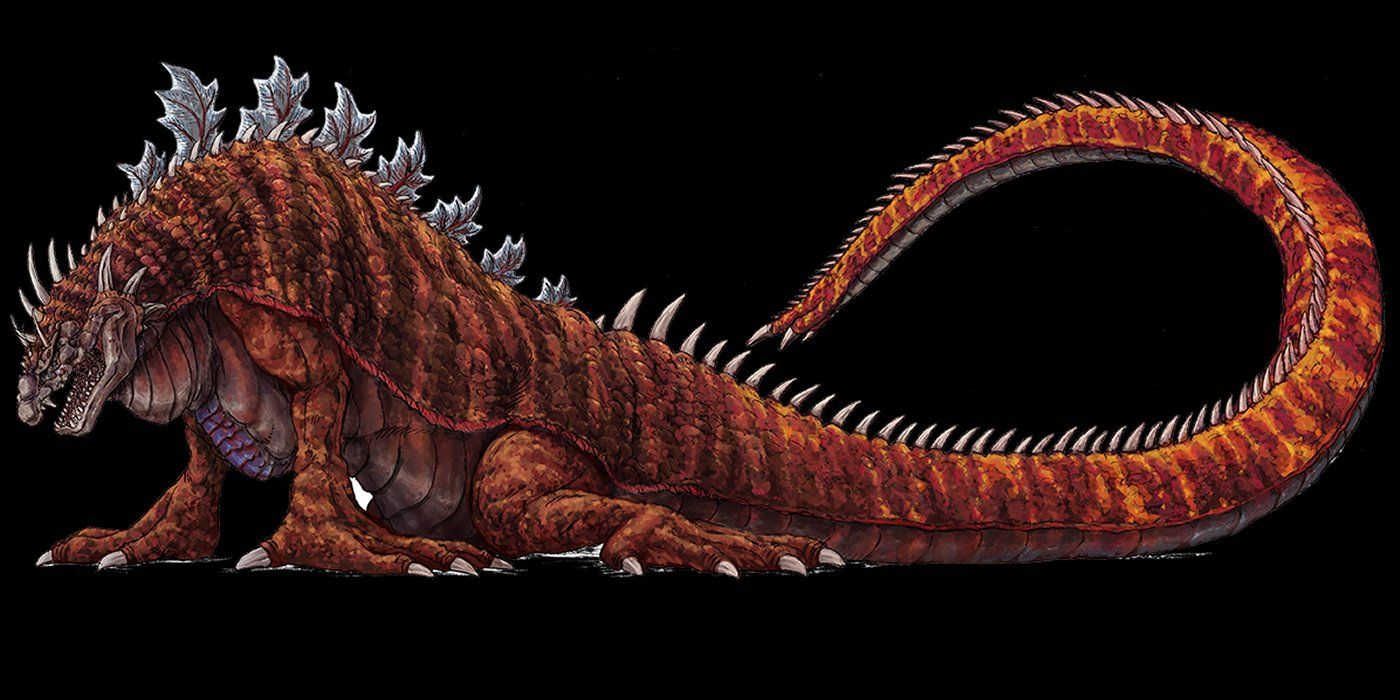
Immediately after killing a Manda in episode 7, Godzilla stepped onto land, complete with a whole new look. Now, he was Godzilla Amphibia. Possibly through energy he gained from Manda’s body, Godzilla had acquired a form that enabled him to traverse across land. In this state, the only connection to Titanosaurus that was left was his maroon color. Everything else was different. As Godzilla Amphibia, he had short front and hind legs, with both sets of feet facing opposite directions. Going all the way down his tail was a row of spikes not typically associated with Godzilla. He had spikes of the same shape all over his head as well Perhaps his only real Godzilla trait was the line of dorsal fins on his back, but they were notably smaller and didn’t descend as far down as normal. Looking at his overall design, Godzilla Amphibia – similar to Aquatilis – looked less like Godzilla and more like an established monster from Toho’s library. Whereas the first form was modeled after Titanosaurus, the second form was based on Varan, a lesser-known Toho kaiju from the Showa series. He was the main antagonist of Varan the Invincible before being reintroduced as a resident of Godzilla’s Monster Island in Destroy All Monsters. Godzilla Amphibia quite clearly shares a lot in common with Varan, including his carapace, posture, spikes, head shape, and color. The two even have the same roar.
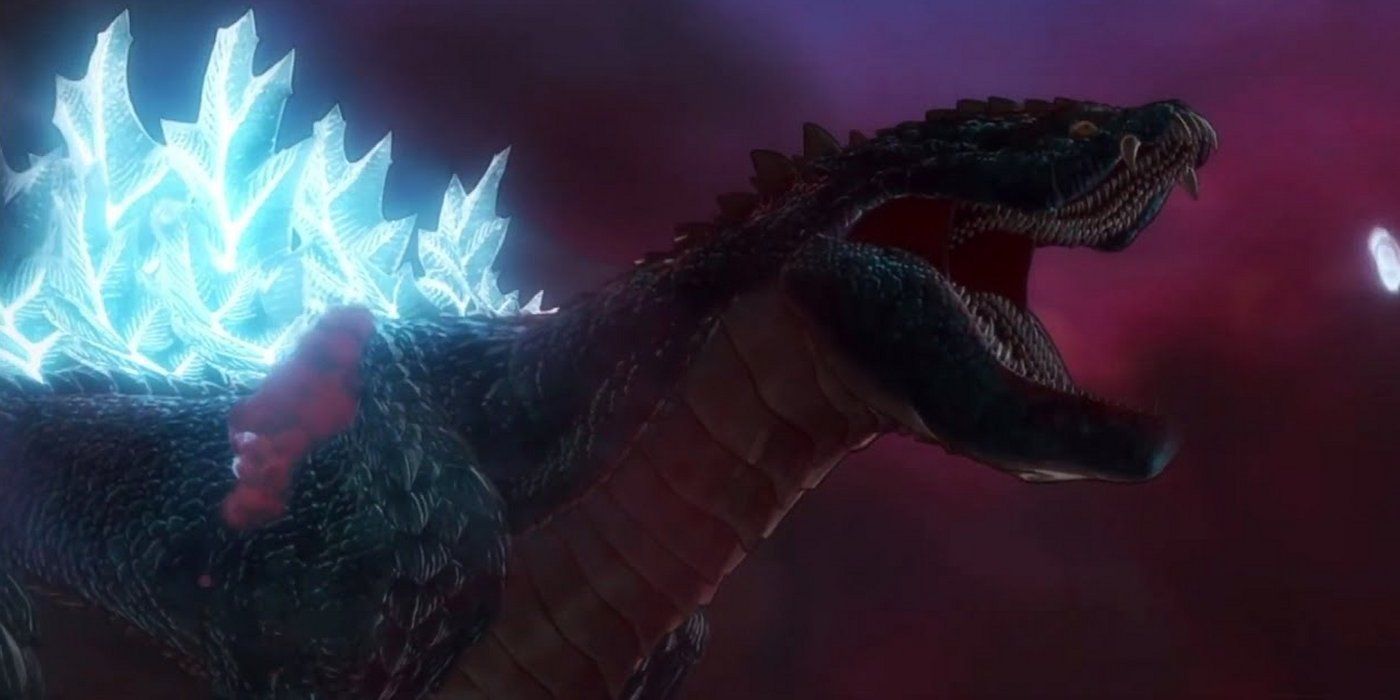
In the midst of his battle with the military, energy suddenly exploded from his body. When the smoke cleared, Godzilla’s body was surrounded with a rocky outer layer, which effectively served as a cocoon of sorts that provided him with an opportunity to transform. When the shell fell apart, Godzilla stood revealed as Godzilla Terrestris, a significantly larger monster with a drastically different appearance.
His third form was a step closer to a more familiar Godzilla, but he still had a way to go. The transformation changed his color to a greenish blue and enlarged his dorsal fins. It also gave him a bipedal body structure, small tusks, arms like a kangaroo, a larger jaw, and Godzilla’s iconic roar. He didn’t acquire the atomic breath, but he did develop an energy attack and the ability to make his dorsal fins glow blue. To take down Rodan, Godzilla Terrestris created a blue atomic ring and fired it at the creature, killing it with ease. The ability appeared to be an improved version of the smoke rings used by Godzilla’s son during the Showa era.
As for what influenced his design, some believe that Toho used Gorosaurus (a giant Allosaurus-like monster from King Kong Escapes and Destroy All Monsters) as his visual inspiration. While he admittedly does have a few of Gorosaurus’ physical characteristics including his head, color, and underbelly, the connection isn’t nearly as obvious as it was with the other two forms.
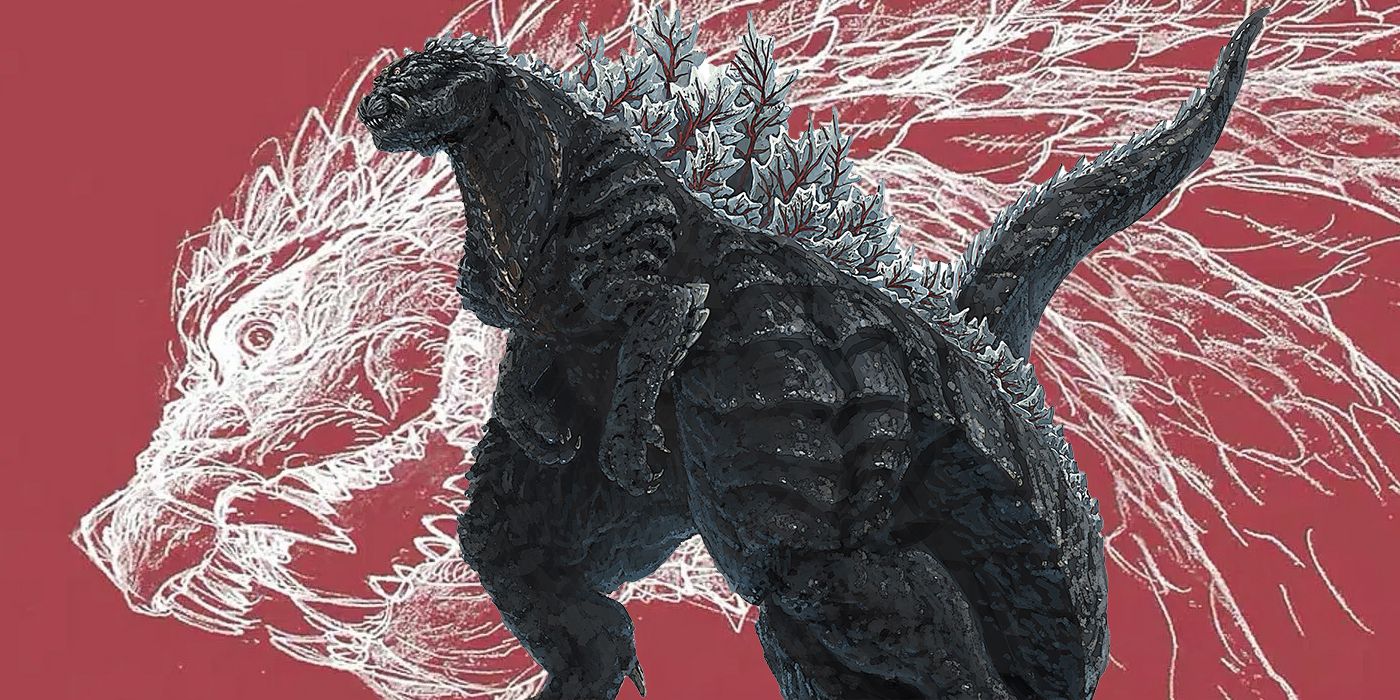
Just when the military seemed to be getting the upper hand on Godzilla, he completed his evolutionary process and attained his fourth and final form: Godzilla Ultima. Seen as the anime’s true Godzilla, the creature retained the tusks from his Terrestris form, which was one of the biggest departures from his iconic look. Other elements that distance the Ultima form from previous Godzilla iterations are his stance, the shape of his immense thighs, and the spikes that run all the way up to his forehead. There’s also the matter of his new atomic breath, which was surrounded by the blue energy rings that originated from the Terrestris transformation. The rest of his design, on the other hand, was pure Godzilla, complete with numerous aspects of his traditional look, such as his face, dark scales, dorsal fins, tail, and more. Now that he’s the Godzilla fans expect him to be, there may not be a need for any further evolutions once he returns in Godzilla Singular Point season 2.
from ScreenRant - Feed https://ift.tt/3dARGTS

No comments: